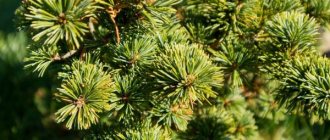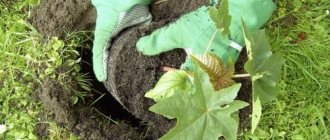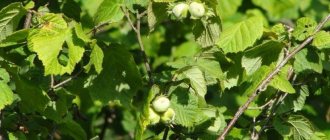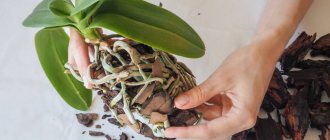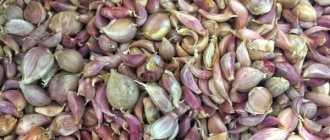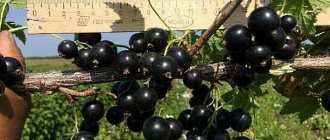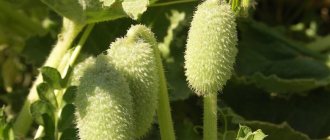Okra - description of the plant
Okra is a rare exotic vegetable that can often be found under other names - okra, gombo, lady's fingers, edible abelmosh.
Distribution of okra
The plant is widespread in America, Asia, southern Europe and, of course, in its homeland - Africa. For Russia, this is still a rather rare vegetable crop. It is grown in small plantations in the Krasnodar Territory and Stavropol Territory, in other territories only by amateur gardeners.
Okra planted in rows in southern Russia
Characteristics of culture
Okra is a vegetable herbaceous annual plant of the mallow family. The height of the shrub depends on the species and can be 30–40 cm for low-growing varieties and reach two meters for tall varieties. Thanks to the branched thick stem and pubescent large dark green leaves, the plant has a rather attractive appearance. Single large flowers of cream or milky color appearing in the leaf axils add decorativeness to the entire shrub. The structure of the fruits is similar to pepper pods - green, pubescent capsules with many seeds; in some varieties they can be quite large - more than 20 cm long.
Flowering and fruiting of okra occur simultaneously
Uses of okra
Okra is grown mainly as a vegetable crop. Due to its neutral taste, reminiscent of green beans, it is widely used in cooking. Due to the high content of protein, vitamins, macro- and microelements, as well as low calorie content and the ability to reduce cholesterol, okra is also used as a dietary product. The seeds of the plant are rich in oil, similar in value to olive oil. The fruits also contain mucous substances with enveloping properties, so okra dishes are recommended for diseases of the gastrointestinal tract. A drink that tastes like real coffee is brewed from ripened, roasted seeds.
Okra fruits contain a large amount of vitamins and nutrients
Sometimes small inclusions of burning substances are found on okra fruits. When cooked, the pungency disappears, but it is better to use gloves when collecting and preparing raw vegetables, especially large ones. This measure will protect your hands from burns and irritation.
Video: okra - beneficial properties
Use in cooking and recipes
Okra is most often used in soups and stews. When it is boiled or stewed, it becomes viscous and slippery and acts like starch - it thickens the dish. Sometimes this is not necessary, and to reduce the sliminess of okra, the following methods are used:
- add a little sour ingredient, for example, citrus juice, vinegar, tomato;
- Before cooking, soak the chopped okra in cool water for 20-30 minutes, then rinse thoroughly.
What do you eat okra with?
It goes well with tomatoes, onions, garlic, peppers, corn and eggplant.
Cooking methods:
- Salad. The okra is quickly fried in hot oil and mixed with other ingredients and salad dressing.
- Fried okra. Garlic, salt and oil will transform its taste. You can add tomatoes or seafood.
- Okra soup. Fry some onion, carrots and celery, add diced okra, garlic, chili pepper, vegetable broth and canned tomatoes. Cook until okra is soft. At the end of cooking, add some fresh herbs. The result is a hearty Italian-style soup.
- Gumbo is a thick soup popular in the United States, usually with seafood, peppers, onions and celery.
How to prepare and cut
Fresh okra, regardless of recipe, must first be washed to remove any lint. Place the pods in a colander, rinse with cool tap water and pat dry.
How to cut okra:
- Using a sharp knife, cut off and discard the stems.
- Cut each pod crosswise into 1-1.5 cm slices (or as indicated in the recipe).
250g of fresh whole okra is about 2 cups chopped.
Step-by-step process for slicing okra pods
How to cook okra
On the stove
- Wash the okra and cut off the stems, but do not cut into pieces.
- Place the pods in a saucepan.
- Add water to cover them completely.
- Add salt and bring the water to a boil.
- Cover and cook over low heat for 8 to 10 minutes or until okra is tender.
- Drain and add a little butter if desired.
In the microwave
- Place the okra with two tablespoons of water in a microwave-safe bowl.
- Cover and cook on 100% power (high) for 4-6 minutes or until cooked through. Stir once halfway through.
- Once cooked, toss with a little oil and season to taste with salt and pepper.
In a frying pan
- Wash as above, cut into pieces and season with salt.
- Beat 1 egg with 1 tbsp. l. milk or water.
- Dip the okra pieces into the egg mixture.
- Dredge them in cornmeal.
- Fry in small portions in plenty of hot oil for 3-4 minutes or until done.
- Remove the okra from the oil using a slotted spoon.
- Place on paper towels.
Okra fried in egg and cornmeal
In the oven
- Preheat oven to 200°C.
- Wash 450 g of whole fresh okra, cut off the stems, cut it into pieces.
- In a large bowl, combine 2 tablespoons olive oil and 1 clove minced garlic.
- Add okra to the mixture and stir.
- Place it in a single layer on a baking sheet.
- Sprinkle with salt and ground black pepper or other spices to taste.
- Bake 15 minutes or until okra is light brown, stirring occasionally.
Baked okra
How to Cook Frozen Okra
Just follow the instructions on the package. Frozen okra is especially good in soups and stews. It is usually prepared in the same way as fresh. It is not defrosted before cooking.
Indian dish bhindi
- Cut fresh okra into 1-2cm pieces (or use frozen).
- In a deep frying pan over medium heat, fry the ajgon seeds in olive oil.
- Add turmeric, asafoetida and crushed small chillies.
- Turn up the heat. Add okra, coriander and fennel. Stir carefully.
- Reduce heat to medium and cook until browned (about 10 minutes per side).
- Add salt, reduce heat to low, add amchur (dried mango), stir and remove from heat.
Bhindi masala - a traditional Indian dish
Popular varieties of okra
Numerous varieties of okra differ from each other in the height of the bush, the size and taste of the fruit, and the length of the growing season.
In our climatic conditions, the best yields are produced by:
- Star of David is a tall variety. The fruits reach a length of 15 cm.
- Red velvet is a late ripening variety. Large red fruits appear 70 days after germination.
- White Velvet is one of the most popular varieties with beautiful white flowers and pods about 10cm long.
- Clemson is a popular high-yielding variety. Of particular value are the large fruits of excellent taste.
- Blondie is a cold-resistant, fast-ripening variety with numerous creamy-green fruits.
Photo gallery: popular varieties of okra
Star of David is the most common tall type of okra. The Red Velvet variety is decorated with brightly colored fruits.
White velvet attracts attention with beautiful snow-white flowers
The Clemson variety has a good fruit taste
The fruits of the Blondie variety are light green in color.
Growing okra in different climate zones
Okra is successfully grown in many regions of our country, however, planting methods for different climatic zones have their differences. Okra is planted mainly using the seedling method. Sowing seeds directly into the ground is possible only in the southern regions - Krasnodar Territory, Stavropol Territory, and the Caucasus. This is due to the fact that the culture is thermophilic and very sensitive to temperature drops.
In the central regions, in the Volga region, Siberia and the Urals, okra is planted through seedlings, and given the fickle weather, it is best to grow this crop in greenhouses or greenhouses.
For good development of okra, it is important to choose a suitable place for planting. Given its southern origin, it is necessary to give it the sunniest and most wind-protected area. Light, fertile soil contributes to a rich harvest.
Video: Growing Okra in Pots - Benefits
Seedling method of growing okra
Okra seeds take two to four weeks to germinate, so to speed up the process, they are pre-soaked. To do this, place a napkin with seeds in a saucer, moisten it with water at room temperature and place it in a warm place for a day.
When soaking seeds, it is important not to allow them to be completely immersed in water - the seeds must breathe. For better results, you can moisten the cloth with rain or melt water.
Sowing seeds for seedlings
Okra seeds are planted in late April - early May. It is very convenient to use separate cups for planting, preferably peat cups. This is due to the fact that okra seedlings have a tap root and almost no lateral roots, so transplantation is painful for them. Using peat pots will allow you to plant seedlings in the garden without damaging the root system.
When using peat pots, seedlings fall into the soil without damaging the roots
Step-by-step process of sowing seeds
- Place the peat pots on a tray and fill them with soil for seedlings.
- Use a stick to make an indentation of about 4 cm in each pot.
- Place the seed in the hole and cover with soil.
- Pour water at room temperature.
- Cover the tray with pots with film.
Caring for Okra Seedlings
During seed germination, it is necessary to maintain a temperature of about 20 degrees and periodically ventilate the pots. After the shoots emerge, the film must be removed and the seedlings placed in a bright, warm place.
Further care of seedlings comes down to timely watering and fertilizing. Two weeks after emergence, the plants can be fed with a complete complex fertilizer for vegetable seedlings. Such fertilizing should be carried out every 12–14 days before planting the seedlings in a permanent place.
Okra seedlings need to be provided with a warm and bright location.
Planting seedlings in the ground
At the age of 35–45 days, the grown and strengthened okra seedlings are planted in a permanent place. Beds with fertile soil are prepared in the fall - mineral and organic fertilizers are added during digging. Planting is best done in cloudy weather or in the evening. When planting tall varieties, leave a distance of about 90 cm between the bushes and 50 cm between the rows. Low-growing varieties are planted at 60 cm and 40 cm row spacing. The planted plants are well watered and mulched with peat or humus.
Grown okra seedlings are planted in beds
A non-seedling method for growing okra
In the southern regions of our country with relatively long and warm summers, okra can be planted directly into the ground. Sowing is carried out when the soil has completely warmed up and the air temperature does not fall below 16 C.
The soaked seeds are deepened by 3–4 cm. The distance between the holes is the same as when planting seedlings. You can place two seeds per hole and later, when seedlings appear, carefully trim off the weak ones. Level the ground and water it.
Care during the growing season
Caring for okra is simple and the techniques for seedling and non-seedling growing methods are the same. After germination, it is necessary to prevent the soil from drying out. When applying fertilizing, it is advisable to alternate mineral phosphorus-potassium fertilizers and organic ones.
At first, seedlings need regular care - weeding, loosening the soil, fertilizing and timely watering. As okra grows, care becomes easier - the overgrown bushes prevent the soil from drying out quickly and themselves inhibit the growth of weeds. You can water adult bushes less often, but abundantly, to wet the soil to a depth of 40 cm.
Bush formation
The formation of an okra bush is carried out in two ways. You can grow a plant in one trunk - breaking out the emerging stepsons. Proponents of this method argue that the branches produce few fruits, but take away the strength of the main shoot, which also loses productivity.
Recent Entries
5 working ways to use tar in the garden 7 indoor plants that help you get married even in adulthood Indoor plants that can bloom in trouble
With the second method, the crown of the main stem is shortened, which stimulates the formation of lateral branches. Adherents of such cultivation believe that such molding gives a greater yield. And apparently, only experiments on your own site will help an amateur decide which method is preferable.
Okra fruiting
About two months after germination, okra begins to bloom, and a week later the first harvest can be harvested. The fruits need to be collected regularly, since after hanging for an extra two or three days, they become coarse and become inedible. In the south, harvesting is carried out every other day, in areas with colder climates - every 4-5 days.
Harvesting okra fruits
Fruiting of okra lasts until late autumn, but as the air temperature drops, the growth of the pods sharply slows down.
Care should be taken when harvesting okra as the plant is covered with a tough, fine hair that causes skin irritation. Therefore, it is better to work with this crop with gloves.
How and how much to store
To store fresh okra, wrap it in paper or a plastic bag and place it in the vegetable drawer of your refrigerator. The shelf life under such conditions is 3-4 days. When storing okra, mucus may appear in the okra, this is normal.
For long-term storage, the pods can be frozen, dried and canned.
To freeze okra:
- Rinse the pods.
- Carefully cut off the stem without touching the seed part.
- Blanch the okra by submerging it in a pot of boiling water. Small pods - 3 minutes, larger ones - 4 minutes.
- Immediately plunge them into a bowl of ice water.
- Cut the pods into pieces or leave them whole.
- Place in bags and freeze.
In the freezer, okra has a shelf life of up to one year.
Okra diseases
Okra is at risk from diseases characteristic of plants of the mallow family.
Blackleg is a fungal disease. It often attacks the stems of okra seedlings. A diseased plant should be removed immediately to prevent neighboring ones from becoming infected. To prevent the occurrence of blackleg, you should avoid high humidity and ventilate the plants more often if they grow in a greenhouse.
When preparing the soil for seedlings and subsequent planting in open ground, it is advisable to spill it with a solution of phytosporin. This microbiological preparation is effective for the treatment and prevention of many fungal and bacterial diseases.
Rust is a dangerous fungal disease. Appears as yellow spots on leaves, stems and buds. On the inside of the leaf, brownish tuberous clusters are found - fungal spores. Affected plants usually die. If a diseased plant is discovered, it must be removed immediately and all plantings inspected.
Powdery mildew is a common fungal disease. A white coating can be seen on the leaves of the affected plant; the plant develops poorly and takes on ugly shapes. It is necessary to remove all leaves with a white coating.
Photo gallery: okra diseases
Sprouts affected by black leg Rust - fungal spores on the underside of the leaf The first sign of powdery mildew is the appearance of a white coating on the leaves
Therapeutic and preventive measures
To combat fungal diseases, it is recommended to spray not only diseased plants with a solution of phytosporin, but also neighboring ones, as well as the soil around them. The instructions for the drug describe in detail how to prepare the drug and how often to repeat the treatments.
To prevent the occurrence of diseases, when growing okra you should adhere to the basic rules of agricultural technology:
- observe crop rotation;
- avoid thickening of plantings;
- remove excess leaves, especially those touching the ground;
- fight weeds and pests, because they are often carriers of diseases.
Errors in the use of fertilizing lead to weakened plants and decreased immunity. Excess nitrogen and lack of phosphorus-potassium fertilizers can provoke the occurrence of fungal diseases.
What is okra?
Okra (or as it is commonly called in Africa itself, okra) is a common annual herbal plant that belongs to the mallow family, and in its shape and taste it very much reminds us all of the familiar eggplant or zucchini.
It was first discovered in the vast expanses of southern Africa, and later migrated to the near world (which includes most European countries). She got there in the usual way at that time: slaves who were taken from Africa decided to capture a piece of their native fauna and their choice fell on okra.
It is important to know: as you already understand, this plant has several names. This is due to the fact that when it ended up on one continent or another, no one could guess what kind of plant it was and therefore they gave okra its name
In most countries this remains the case to this day.
Pests of okra
Of the insect pests, the most likely danger to okra is aphids, thrips, and cabbage cutworms.
Aphids are a frequent garden visitor, drawing juices from the leaves, weakening the plant. Clusters of small gray or green insects can be seen on the crown of the plant and on the underside of the leaves.
Thrips are sedentary small insects that cause significant damage to plants. Settling on leaves and buds, they draw juice from the plant. After their meal, holes remain on the plants into which all kinds of fungi can penetrate, so the fight against this pest must begin immediately.
The bollworm is a caterpillar that eats both the leaves and fruits of okra. In a very short period of time, the pest can leave a gardener without a harvest of not only okra, but also many other crops.
Photo gallery: insect pests of okra
Aphids, having settled on the top of the head, quickly spread throughout the plant
Thrips extract juice from the plant and weaken it.
Cabbage cutworm eats leaves and spoils fruits
Pest Control
By following simple rules when growing okra, you can prevent the occurrence of insect pests. It is very important to prevent the beds from becoming crowded and to pull out the weeds in a timely manner. Regular inspection of plants will help you notice the pest before it becomes difficult to fight and the damage is noticeable. When insects are first detected, it is necessary to treat the plantings with an insecticide. Today on store shelves there is a rich assortment of all kinds of pest control products. Among this many, I would highlight Fitoverm - a biological preparation, low-toxic and safe for the environment. Fruits and vegetables treated with Fitoverm can be eaten within two days.
The benefits and harms of okra (okra)
Okra is a non-starchy, low-calorie vegetable that contains many health-promoting vitamins and minerals. It contains no fat, no cholesterol, and very little sodium. On RBlogs.ru we’ll take a closer look at what the benefits of okra are and whether it can cause harm.
Beneficial features
Here are some of the health benefits you get from eating okra:
- Reduces the likelihood of cardiovascular diseases.
- Fights fatigue thanks to flavonoids, polysaccharides and polyphenols.
- Helps protect the liver from disease.
- Boosts immunity thanks to vitamin C.
- Heals the skin when used externally as part of cosmetics.
- Strengthens vision as it contains many antioxidants.
- Promotes bone mineralization due to calcium, vitamin D, phosphorus, magnesium and protein.
You may not like the mucilage of okra, but it is another beneficial ingredient. It is a kind of soluble fiber that improves digestion, lowers cholesterol and protects the body from cardiovascular diseases.
For diabetes
Since okra is rich in fiber, it helps reduce high blood sugar levels.
When losing weight
Okra is a good source of fiber, which not only improves intestinal motility, but also keeps you feeling full for a long time. It contains many nutrients that speed up metabolism.
During pregnancy and lactation
Okra is high in folic acid (vitamin B9), which is important for pregnant women. It helps reduce the risk of neural tube defect, which affects the brain and spine of the developing fetus.
